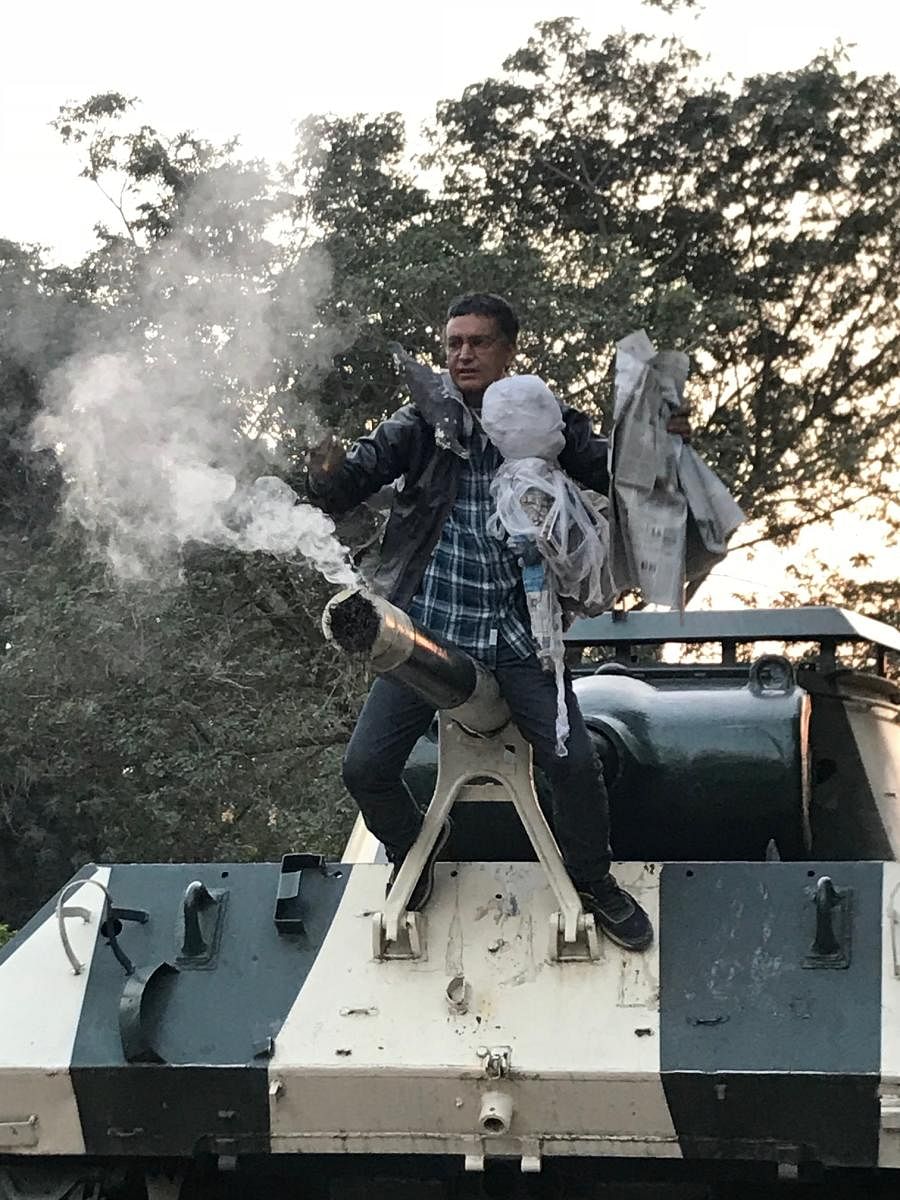
Last year, performance artists Inder Salim amputated his remaining pinkey. He had chopped off the first one almost two decades ago.
Bringing his palms together in the Indian gesture of salutation, he tells me the ‘balance’ in the gesture is now complete. “It is supposed to help me see the design behind things better,” he says. Last time, it was to learn how to ‘see things better’.
The venue was the same, an old bridge at the intersection of New and Old Delhi. “I had to lose something from my body in order to gain new insights,” he explains. Putting his upturned palms parallel to his eyes, he looks through the gap that now exists where his little fingers once were, to demonstrate his point better.
His name, too, is a performance. Originally, Inder Tikoo, a Kashmiri pandit refugee in Delhi, he added Salim instead of Tikoo to lay claim to the syncretic culture of the valley, a nod to secularism that he believes is integral to India.
We meet at a coffee house in Connaught Place. Salim is unruffled through the noise of construction work, and I wonder if this is a metaphor for performance art and his method: to deconstruct things, and to remodel them in a new way.
Bit of background
Wearing a thin blazer, with a scarf thrown casually over it, and citing philosophers like Gilles Deleuze, his favourite, and Emmanuel Kant, he could easily pass off for a college professor. Now retired from work — he held a full-time clerical job in a bank — he lives in Delhi with his wife and has two children.
In his 60s, he is finally receiving the recognition as a pioneer in performance art in India although he started out in the late 90s, after becoming disillusioned with the visual arts scene. “Back then, there was no one around doing what I was doing,” he says.
Salim is perhaps the most politically oriented among India’s performance artists. He performed on the ghats of Benaras, on December 6, the date of demolition of the Babri Masjid in 1992 by right-wing Hindus. He was also active with the ‘Not in My Name’ protests that started after incidents of lynchings.
In Chandigarh some time back, for a performance, he climbed on top of a tank, and after stuffing the cannon’s mouth with straw, he set it on fire, a comment on how war hysteria is generated.
According to Bhattacharjya Tato, art curator and critic, art is inherently political as it is “a protest against Capitalism. In performance art, there is no concept of an art object that can be kept in a gallery or a museum. Only some props are used.
There is no script. The body is the main tool with which art is created,” he explains. It’s thus the “the most authentic art experience,” especially because there is no manipulation of space and time, he reasons.
Like Salim, B Ajay Sharma also performs politically coharged material, but it’s subtler. At 32, he has travelled to the US and Europe extensively for performances, and he runs a collective of performance artists in Delhi called in_Process.
Although he has formally studied visual arts, he took to performance art for the range and freedom of experimentation it accords him. His inspirations are eclectic: Ana Mendieta, the celebrated Mexican artist who had a tragic death; Marina Abramovic, the Serbian artist who got performance art ‘mainstream acceptance’ according to Bhattacharjya when she was invited to perform at MOMA, New York in 2010; and others.
Strong message
At a workshop performance at Delhi’s abandoned Begumpur Mosque, a huge and majestic pre-Mughal structure, Sharma — who belongs to a small town in Jharkhand called Deoghar — donned a skull cap, and started to blow on a dog whistle. A violin, played by a Japanese musician screeched in the background. Wearing a veil that denoted racial supremacy, as Sharma says — which looked strikingly similar to masks worn by KKK members — another artist moved about barefoot on rose petals strewn over the floor.
After the performance, Sharma said that both the choice of the location and the use of the skull cap and dog whistle as props was deliberate. “It is a comment on rising violence in the name of religion.”
He wrote on the cobblestone floor of the mosque — Rose is Red: Blood is… — “I left it incomplete as the meaning is already conveyed,” he says.